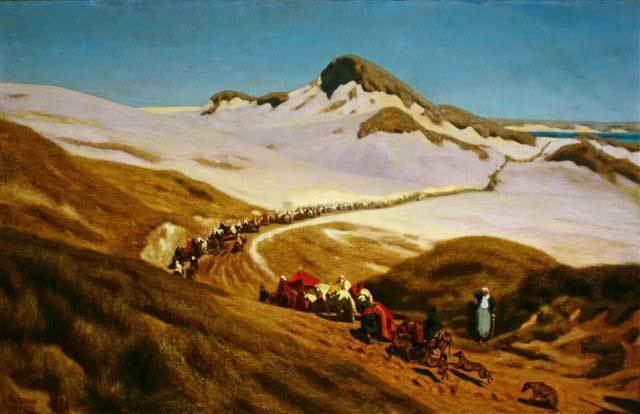Name Marcus Waterman | ||
 | ||
Marcus waterman speaking in nchs chapel 2015
Marcus (sometimes Mark) Waterman (September 1, 1834 – April 2, 1914) was an American painter, mainly of landscapes and Orientalist subjects.
Contents
- Marcus waterman speaking in nchs chapel 2015
- Marcus waterman speaking in nc middle school chapel 2015
- Life
- Career
- References
Marcus waterman speaking in nc middle school chapel 2015
Life
Waterman was born in Providence, Rhode Island to William Henry and Martha Burrill Pearce Waterman; he had a brother, William Clarence Waterman, who survived him. He graduated from Brown University in 1857 and moved to New York, where for twenty years he kept a studio in the New York University building. His training is unclear; some sources claim that he was entirely self-taught, while others, including Waterman himself, claim that he either worked with or was influenced by Thomas Hill and William Morris Hunt. Before moving to New York he was part of a group of "art enthusiasts" in Providence, including Thomas Robinson, John N. Arnold, James M. Lewin, and Frederick S. Batcheller; Robinson would go on to be a friend of his for many years. Waterman is known to have attended a life drawing class at the National Academy of Design during the 1858–1859 academic year. In the former year he began exhibiting at the Academy as well, a habit which he kept up as long as he lived in the city. Early on he chose to specialize in landscape painting, and many of the pictures he showed at the Academy were in this vein. He was elected an associate of the Academy in 1861.
In 1874 Waterman accompanied a group of painters including Hunt on a sketching trip along the Massachusetts coast, and as a result resettled in Boston, where he would remain until moving to Italy. He spent much time traveling in the 1870s, 1880s and 1890s; among his destinations were the Netherlands, France, southern Spain, and North Africa. Visiting Algiers was a revelation to the artist, and he said in an 1894 interview that "for the first time he felt at home". Having first visited in 1879, he returned there a second time, staying between 1884 and 1886. He continued depicting American subjects as well, favoring the beaches of Cape Cod and the mountains of Vermont. Waterman married an Italian woman, and in the first decade of the twentieth century he relocated with her to her home country; he died in Italy, in Madero, and is buried in Swan Point Cemetery in Providence.
Waterman was described after his death as a man of broad intellect and a deep thinker, something of a philosopher; he was said to hold the average American art buyer in contempt, and was well-off enough to enjoy the art of painting for itself, rather than for any pecuniary reasons. He was a member of the Paint and Clay Club of Boston, of the American Watercolor Society, and the Artists Fund Society.
Career
Though Waterman was primarily a painter of landscapes, he turned his hand to other genres at times during his career. An early attempt was a self-portrait of 1861, presented to the National Academy of Design upon presentation of his diploma the following year. He bore no fondness for the work, and a 1906 letter detailing his opinions of the painting survives:
I regret to confess that I am the guilty party who painted the frightful portrait in question. I never saw it but once since I did it & it filled me with horror & remorse. If there is any survivor of the scores of painters who were friends of mine in New York some fifty years ago, he will oblige me by taking the said painting & giving it a good glaze of ivory black, wiping out a spot somewhere & thus converting it into a Whistler. I was a boy in my twenties when I did it & had never painted a head before. I hope I may be forgiven.
The self-portrait, too, survives, in the Academy's collection.
Waterman turned to Orientalist subjects after his visits to Algiers, and his paintings in this arena have been described as "rather literary"; many of them depict scenes from The Arabian Nights, while others are based on landscape studies made during his travels in Oram, Algiers, Andalusia, and the Sahel. It was already noted during his career that his paintings, though praised by critics, were out of step with trends in the contemporary artistic scene; within three years of his death his work was described as "old-fashioned" when it was shown in Boston. Even so, at his death he was remembered by one writer as "the greatest colorist this country has produced, and far and away the greatest painter of light."
Besides the National Academy, museums which include work by Waterman in their collections include the Museum of Fine Arts, Boston, the Addison Gallery of American Art, the Worcester Art Museum, the Pilgrim Monument and Provincetown Museum, the Boston Public Library, and the Indiana University Art Museum.
